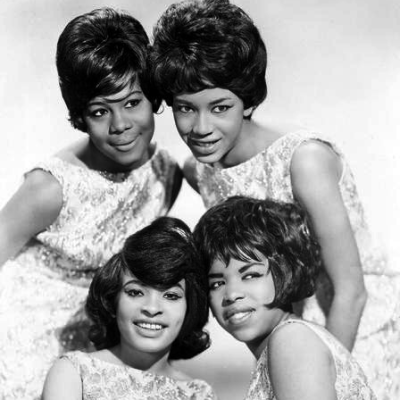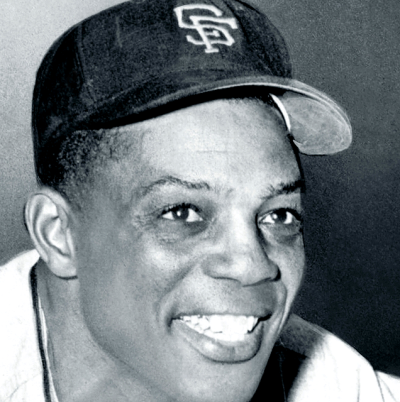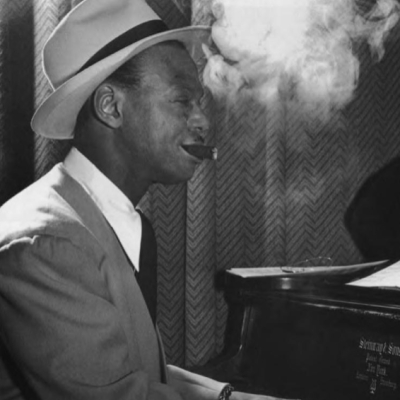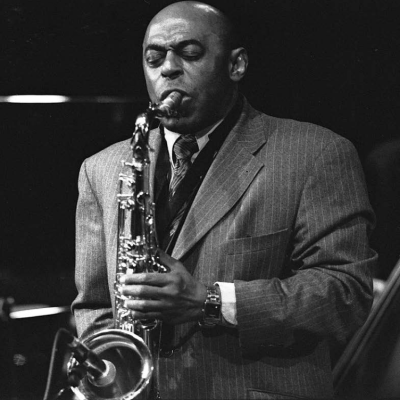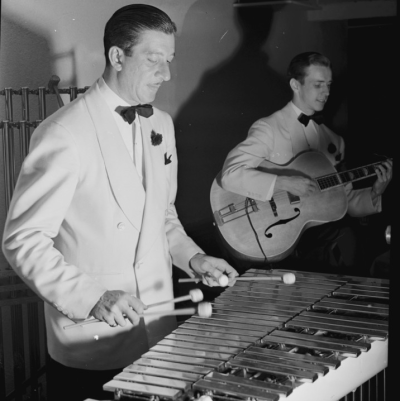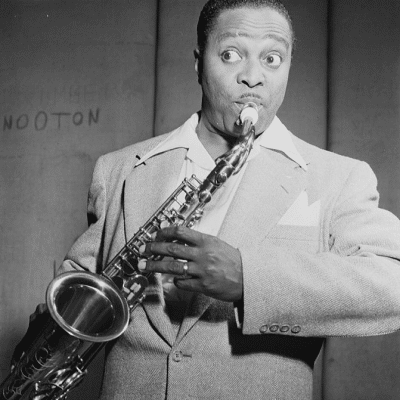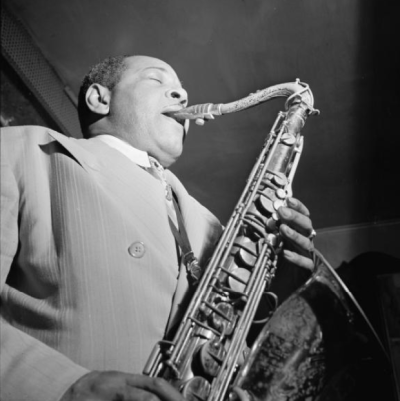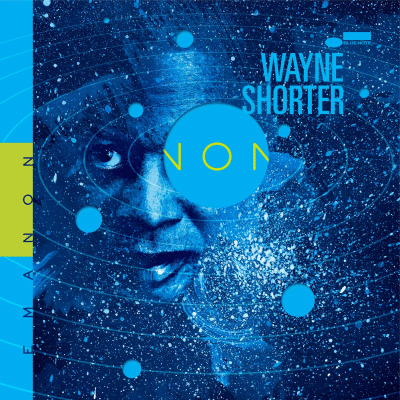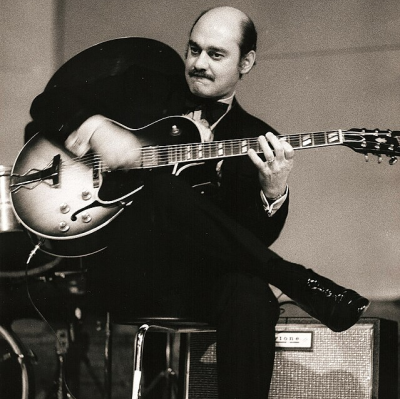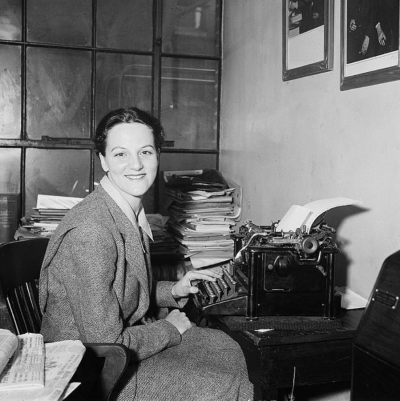.
.
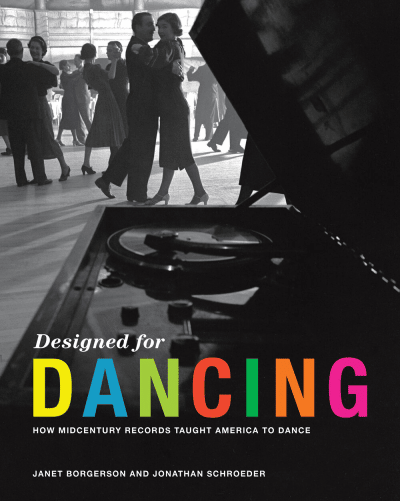
Designed for Dancing: How Midcentury Records Taught America to Dance [MIT Press]
by Janet Borgerson and Jonathan Schroeder
…..Designed for Dancing: How Midcentury Records Taught America to Dance reveals an untold story of US identity through the vibrant covers of midcentury records. The book presents a compelling, colorful catalog of the music, dances, and entertainers on record that inspired postwar America. In the process of writing and research, we amassed hundreds of relevant records that we thought were worth including. Easily, 450 albums. We ended up writing about many more than we could fit in the “official version.” Forced to winnow our selections down to a manageable 300 covers, numerous “outtakes” have awaited release, several of which will periodically appear in ensuing issues of Jerry Jazz Musician. Here, we share three wonderful examples that didn’t quite make the final cut in our book.
-Janet Borgerson and Jonathan Schroeder
.
(Click here to view the book’s website)
.
.
___
.
.
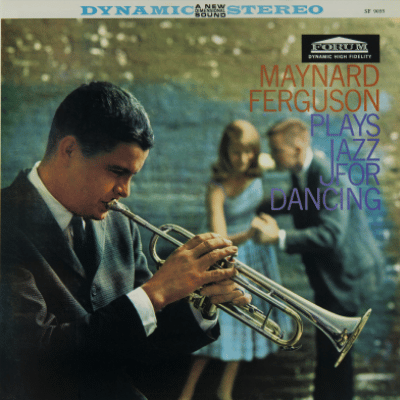
Maynard Ferguson Plays Jazz for Dancing
Forum SF 9035; 1959
.
…..Maynard Ferguson Plays Jazz for Dancing finds the virtuoso trumpet player with lips pursed, fingers poised on the valves, playing for a lone pair of dancers in the background. Look closely and you’ll see a fun reflection of him in the horn’s bell. He’s dressed conservatively, in checked suit and tie, which reflects the musical style of the LP – the cool tones of the cover signal the cool jazz of the record within. Jazz for Dancing harkens back to the swing sound that held sway when Ferguson began his career with the big bands of Charlie Barnet, Jimmy Dorsey, and Stan Kenton. The ahistorical liner notes – jazz is closely associated with dancing – express the urge to reclaim jazz for dancing: “Jazz is not just a listening matter. It’s not always music that requires your undivided attention and serious concentration. Jazz is many things and, as Maynard Ferguson and his orchestra so ably demonstrate in this album, jazz can be fun…jazz can be a dancing matter!”
…..Originally released on Roulette, this version of Maynard Ferguson Plays Jazz for Dancing is on Forum, a budget label that specialized in re-issues, distributed through grocery stores and department stores rather than record shops. The LP includes such standards as Chick Webb’s signature “Stompin’ at the Savoy,” Rogers and Hammerstein’s “It Might as Well Be Spring,” and “Round Midnight” by Thelonious Monk (which is listed as “’Round About Midnight” in the notes). Ferguson, known for his powerful high notes, enjoyed a long career in the spotlight, and continued to release records into the 2000s. He had a hit with his version of “Gonna Fly Now” (the at times insipid, but inspiring nonetheless, Theme from Rocky) in 1977. His trumpet can be heard on Perez Prado’s classic album Havana 3 A.M., as well as over forty film soundtracks such as Rear Window, The Man With The Golden Arm, and The Ten Commandments. (You can hear Maynard Ferguson’s searing trumpet solo from his guest performance with the New York Philharmonic, performing William Russo’s Symphony No. 2 in D major “Titans,” under the direction of Leonard Bernstein on the New York Philharmonic website . The liner notes conclude: “He has taken jazz out of its usual locale – the smoke filled nightclubs, the open air festivals, the cross country tours–and found for it still another place…the dance floor!”
.
.
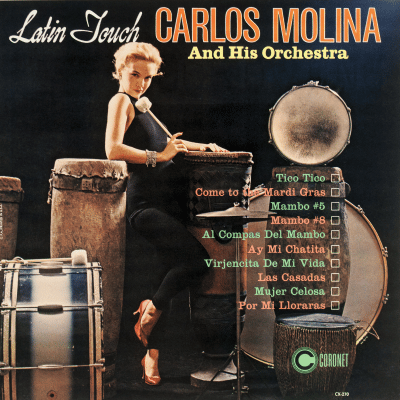
Carlos Molina and His Orchestra
Latin Touch
Coronet CX-270; 1965
.
…..Given the masculine milieu of Latin American drumming, Sheila E notwithstanding, it seems fairly clear that the blond model on the cover did not play percussion for Carlos Molina and his Orchestra’s Latin Touch. In this glamour shot, with her hair almost washed out by the harsh studio lighting, making her white skin even lighter, she poses amidst a diverse collection of drums, some “primitive,” including timbaus, with their animal-skin heads, and some “modern” – a hi hat and kettle drums, with their shiny steel hardware. Wearing armless black bodysuit and tights – one knee coyly lifted, the better to show off her satin heel – she poses provocatively, mallet perched playfully on her pectoral, seducing the prospective LP purchaser. The songs are listed in alternating green and white typography, resembling a set list or perhaps a dance card, with white boxes to check off for each dance.
…..Born in Puerto Rico, Molina was a pioneer in introducing Latin music to the US in the 1930s and 1940s, but, like many other bandleaders, he was overshadowed by Perez Prado in the 1950s. His music can be heard in several films, including Cha Cha Cha Boom, from 1956. Latin Touch includes a set of Latin dance classics, including a fairly frantic version of the Brazilian choro “Tico Tico” (with swirling trumpets and unintelligible, made-up vocals by the enigmatic Charlita, a B-movie actress and singer, noted for her role as Princess Nona in Bela Lugosi Meets a Brooklyn Gorilla), “Mambo # 5,” and Perez Prado’s “Al Compas Del Mambo.” Overall, the album provides a range of dancing opportunities: “In night clubs, theaters and dance halls throughout the county and on the air, Carlos Molina and his ‘Music of the Americas’ is tremendously popular, because it represents a combination of swing, jive and Latin rhythms.”
.
.
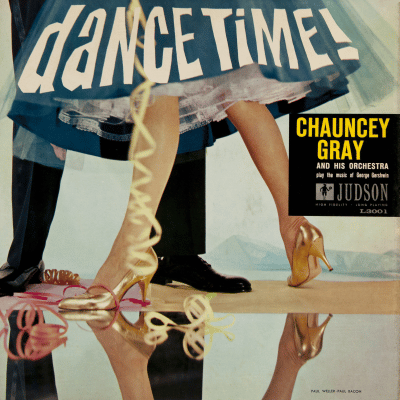
Chauncey Gray and His Orchestra
Dance Time!
Judson L 3001; 1957
(produced by Bill Grauer; engineer Sam Morse; cover design by Paul Bacon; photo by Paul Weller)
.
…..Dance Time! from Chauncey Gray and his Orchestra features twenty Gershwin tunes in an uninterrupted flow. As with so many of our dance records, Dance Time! makes explicit the tension between going out to dance and staying in the comfort of home. On one hand, the liner notes highlight the band’s prominent bookings: “Chauncey Gray’s music has been delighting dancers for almost two decades now, first at the famous El Morocco, and now at the Embassy Club of the Hotel Ambassador.” On the other, they suggest “one function of this album is to provide you with a more convenient (and more economical) alternative to trying to brave that crowd. Just put this record on the hi-fi set, dim the lights, and take hold of your dancing partner.” Chauncey Gray may have “played at the top spots from Hollywood to Florida, and at more debut parties and proms than he can remember…but right now, he’s ready to play for your dancing pleasure.”
…..The cover, designed by the team of Paul Weller and Paul Bacon, shows a close-up of a dancing couple’s legs, her wide blue skirt and white lace petticoats providing a charming background for the title’s cheerful typography. His dark pants and shoes in the background, her shiny gold pumps forward, appear reflected, upside down, at the bottom of the cover. A few party streamers curl around the dancers, lending a festive air to the shot. Gray, whose 1920s smash “Bye Bye Blues” was famously covered by Les Paul and Mary Ford in 1952, followed Dance Time! with Dance Time in Paris, also released as C’est Magnifique!: Dance Time in Paris, one of his last albums.
.
.
___
.
.
photo by Ria Tafani
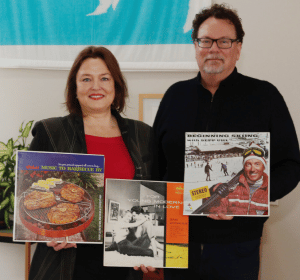
Janet Borgerson and Jonathan Schroeder, authors of Designed For Dancing: How Midcentury Records Taught America to Dance [MIT Press]
.
Ms. Borgerson is Wicklander Fellow at DePaul University. Mr. Schroeder is William A. Kern Professor in the School of Communication, Rochester Institute of Technology. They are the authors of Designed for Hi-Fi Living: The Vinyl LP in Midcentury America (MIT Press), named a best book of 2017 by the Financial Times and a best music book of 2017 by Vinyl Factory.
Click here to visit the book’s website
Click here to read the Jerry Jazz Musician interview with Janet Borgerson and Jonathan Schroeder
.
.
___
.
.
Click here to subscribe to the Jerry Jazz Musician quarterly newsletter
Click here to help support Jerry Jazz Musician
.
.
.









